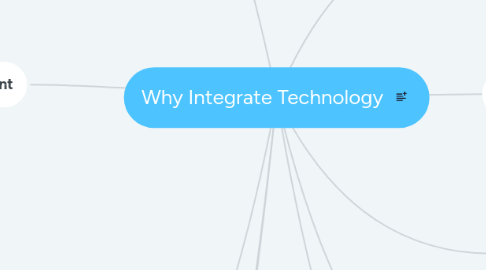
1. Teaching Should Be Different
1.1. Teachers need to help students develop 21st century skills
1.2. Teachers should model technology integration
1.3. Technology Lifelong Learners
2. Standards are Different
2.1. ISTE Technology Standards
2.1.1. Copyright & Fair Use
2.1.1.1. Educator
2.1.1.1.1. 3. Citizen: c: Mentor students in the safe, legal and ethical practices with digital tools and the protection of intellectual rights and property.
2.1.1.1.2. 3. Citizen: d: Model and promote management of personal data and digital identity and protect student data privacy.
2.1.1.2. Student
2.1.1.2.1. 2. Digital Citizen: b. Engage in positive, safe, legal and ethical behavior when using technology, including social interactions online or when using networked devices.
2.1.1.2.2. 2. Digital Citizen: c. Demonstrate an understanding of and respect for the rights and obligations of using and sharing intellectual property.
2.1.2. Cyberbullying
2.1.2.1. Educator
2.1.2.1.1. 3. Citizen: a: Create experiences for learners to make positive, socially responsible contributions and exhibit empathetic behavior online that build relationships and community
2.1.2.2. Student
2.1.2.2.1. 2. Digital Citizen: a. Cultivate and manage their digital identity and reputation and are aware of the permanence of their actions in the digital world.
2.1.3. Safe Use of the Internet
2.1.3.1. Educator
2.1.3.1.1. 1. Learner: c. Stay current with research that supports improved student learning outcomes, including findings from the learning sciences.
2.1.3.2. Student
2.2. Ohio Technology Standards
2.3. Ohio Subject Standards
3. Skills are Different
3.1. Communication & Collaboration
3.2. Research & Information Literacy
3.3. Critical Thinking
3.4. Linear Thinking/Nonlinear Thinking
3.5. Visual Literacy/Visual Thinking
3.6. Spatial Thinking
3.7. Digital Age Reflection
4. Nonlinear Multimedia Project
4.1. Educator
4.1.1. 3. Citizen: b. Establish a learning culture that promotes curiosity and critical examination of online resources and fosters digital literacy and media fluency.
4.2. Student
4.2.1. 2. Digital Citizen: b. engage in positive, safe, legal and ethical behavior when using technology, including social interactions online or when using networked devices.
5. UDL Part 2: Metaverse Augmented Reality Project
5.1. Educator
5.1.1. 5. Designer: c. Explore and apply instructional design principles to create innovative digital learning environments that engage and support learning.
5.2. Student
6. The world is different
6.1. Availability of Technology
6.2. Global Job Market Requires Technology
6.3. Technology Demands are more advanced
7. Students are Different
7.1. Always on and always connected
7.2. Used to stimulating environment
7.3. Comfortable multitasking
8. Google Collaborative Project
8.1. Educator
8.1.1. 3. Citizen: c. Mentor students in the safe, legal and ethical practices with digital tools and the protection of intellectual rights and property.
8.2. Student
8.2.1. 6. Creative Communicator: c. Communicate complex ideas clearly and effectively by creating or using a variety of digital objects such as visualizations, models or simulations.
9. UDL Project: All Types of Learners
9.1. Educator
9.1.1. 5. Designer a. Use technology to create, adapt and personalize learning experiences that foster independent learning and accommodate learner differences and needs.
9.2. Student
10. Digital Video
10.1. Educator
10.1.1. 5. Designer: b. Design authentic learning activities that align with content area standards and use digital tools and resources to maximize active, deep learning.
10.2. Student
10.2.1. 1. Empowered Learner: c. Use technology to seek feedback that informs and improves their practice and to demonstrate their learning in a variety of ways.
